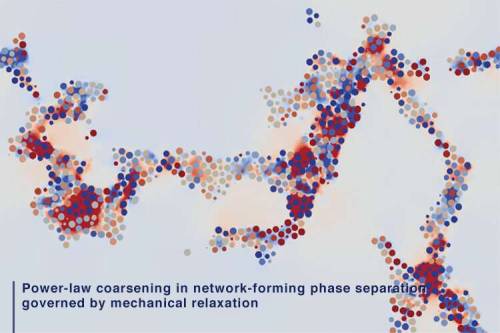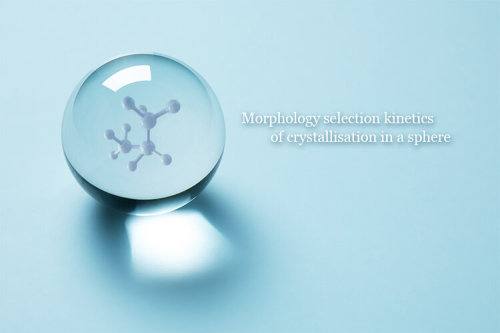#colloids
Discovery of a new law of phase separation
Researchers from Institute of Industrial Science at The University of Tokyo investigated the mechanism of phase separation into the two phases with very different particle mobilities using computer simulations. They found that slow dynamics of complex connected networks control the rate of demixing, which can assist in the design of new functional porous materials, like lithium-ion batteries.
According to the old adage, oil and water don’t mix. If you try to do it anyway, you will see the fascinating process of phase separation, in which the two immiscible liquids spontaneously “demix.” In this case, the minority phase always forms droplets. Contrary to this, the researchers found that if one phase has much slower dynamics than the other phase, even the minority phase form complex networks instead of droplets. For example, in phase separation of colloidal suspensions (or protein solutions), the colloid-rich (or protein-rich) phase with slow dynamics forms a space-spanning network structure. The network structure thickens and coarsens with time while having the remarkable property of looking similar over a range of length scales, so the individual parts resemble the whole.
Post link
Study reveals how to break symmetry in colloidal crystals
Nature keeps a few secrets. While plenty of structures with low symmetry are found in nature, scientists have been confined to high-symmetry designs when synthesizing colloidal crystals, a valuable type of nanomaterial used for chemical and biological sensing and optoelectronic devices.
Now, research from Northwestern University and the University of Michigan has drawn back the curtain, showing for the first time how low-symmetry colloidal crystals can be made—including one phase for which there is no known natural equivalent.
“We’ve discovered something fundamental about the system for making new materials,” said Northwestern’s Chad A. Mirkin. “This strategy for breaking symmetry rewrites the rules for material design and synthesis.”
The research was published today (Jan. 13) in the journal Nature Materials.
Post link
Having a ball: Crystallization in a sphere
Crystallization is the assembly of atoms or molecules into highly ordered solid crystals, which occurs in natural, biological, and artificial systems. However, crystallization in confined spaces, such as the formation of the protein shell of a virus, is poorly understood. Researchers are trying to control the structure of the final crystal formed in a confined space to obtain crystals with desired properties, which requires thorough knowledge of the crystallization process.
A research group at the Institute of Industrial Science, the University of Tokyo and Fudan University, led by Hajime Tanaka and Peng Tan, used a droplet of a colloid—a dispersion of liquid particles in another liquid, like milk—as a model for single atoms or molecules in a sphere. Unlike single atoms or molecules, which are too small to easily observe, the colloid particles were large enough to visualize using a microscope. This allowed the researchers to track the ordering of single particles in real time during crystallization.
“We visualized the organization process of colloid particles in numerous droplets under different conditions to provide a picture of the crystallization process in a sphere,” says Tan.
Post link



